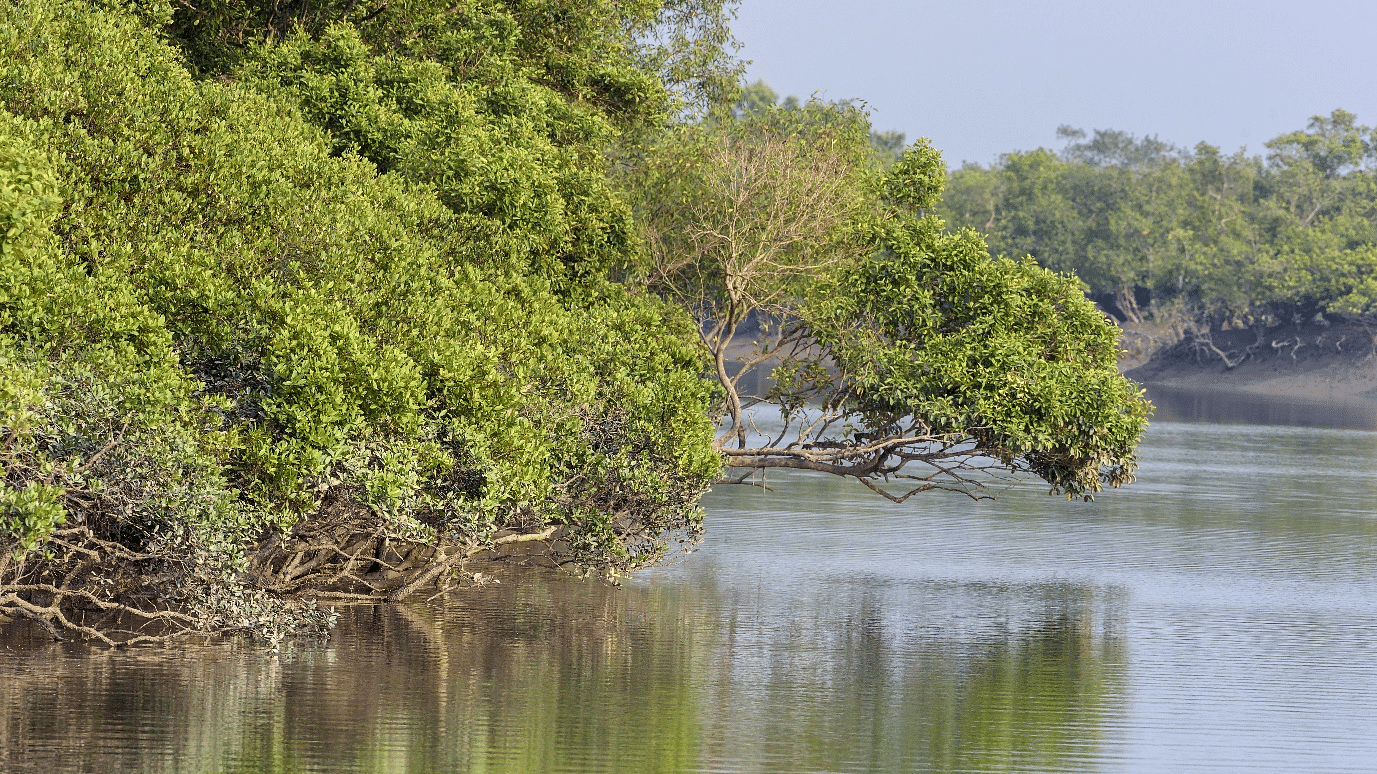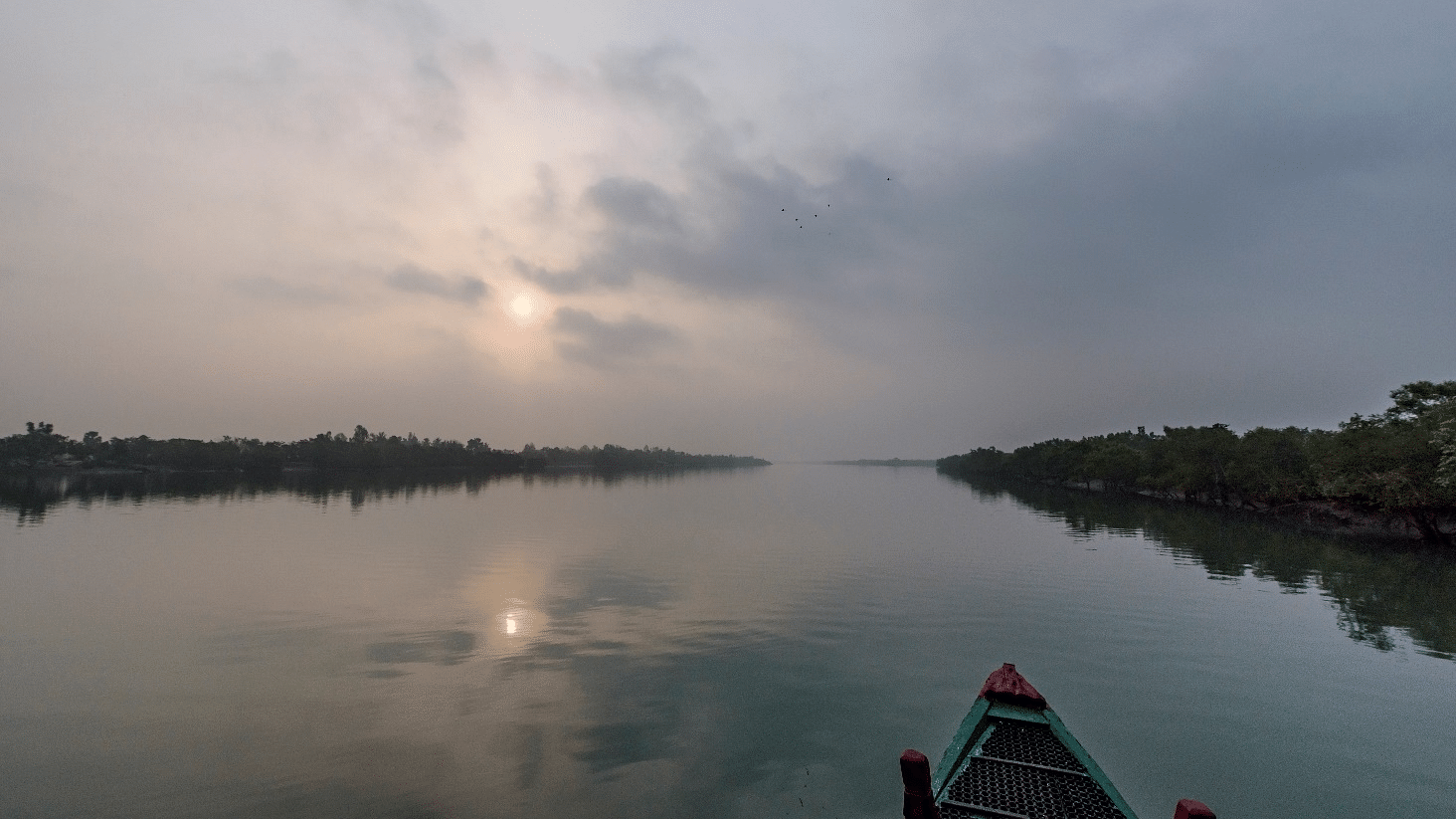- Fascinating Facts About the Sundarbans
- Manushi Chhillar at The Riverwood Forest Retreat, Dooars
- Holiday to the Land of Mowgli
- The Butterfly Lifecycle
- Interesting Facts About Pench Tiger Reserve: The Land of Iconic Tigers
- Butterfly Garden in Pench, Kanha and Dooars
- 7 Differences Between Butterflies and Moths
- Animal Facts
- Discovering the Avian Treasures of Sundarbans
- Safari Tips

The Sundarbans, a UNESCO World Heritage Site, is a realm of mystery, beauty, and unparalleled biodiversity. Shared between India and Bangladesh, it is renowned for being the largest mangrove forest in the world and the natural habitat of the iconic Royal Bengal Tiger. Exploring this region is a dream come true for wildlife enthusiasts and adventurers alike.
Here are 14 fascinating facts about the Sundarbans that will deepen your appreciation for this natural wonder.
Here are 14 fascinating facts about the Sundarbans that will deepen your appreciation for this natural wonder.
- A UNESCO World Heritage Site
The Sundarbans National Park was declared a UNESCO World Heritage Site in 1987 for its unique ecosystem and critical role in tiger conservation under the Project Tiger initiative. - The Rhythm of the Tides
The Sundarbans experiences high and low tides twice a day. High tides can raise the water level between 6 to 18 feet, submerging the area, while low tides reveal vast mudflats. For a thrilling wildlife experience, high tides are the best time for boat safaris to observe animals in their natural habitat. - The Largest Delta on Earth
The Sundarbans is part of the world’s largest delta, formed by the confluence of the Ganga, Brahmaputra, and Meghna rivers. This delta is not only vast but also the most active, with islands continuously forming and eroding due to tidal activities. - Home to the Royal Bengal Tiger
The Sundarbans is famously home to the Royal Bengal Tiger, locally known as the Swamp Tiger. These tigers are excellent swimmers and have adapted to the mangrove ecosystem. The latest census (2019-2020) by the West Bengal Forest Department recorded a population of 102 tigers, marking significant conservation success. - 102 Islands, 54 Inhabited
The Sundarbans is an archipelago of 102 islands, out of which 54 are inhabited. These islands are surrounded by dense mangroves and intersected by a labyrinth of rivers, streams, and creeks, making it one of the most picturesque and unique ecosystems in the world. - Gosaba: The Largest Inhabited Island
Gosaba is the largest inhabited island in the Indian Sundarbans, comprising 40% of its total area. It is a self-sufficient community with hospitals, schools, and government facilities. Beyond Gosaba lies the untouched wilderness of the mangrove forest. - The Widow Village
One of the Sundarbans villages is known as the Widow Village due to the tragic loss of lives caused by man-eating tigers. Fishermen require special permits to enter the core zones for fishing or honey collection, underscoring the region's challenges and the resilience of its inhabitants.

- A Cultural Heritage: Bono Bibi Worship
The Sundarbans is steeped in folklore and religion, with Bono Bibi, the goddess of the forest, revered by both Hindus and Muslims. She is believed to protect locals from predators like tigers. Her legend is celebrated annually during the Bono Bibi Festival, with folk dramas (Bono Bibi Pala) performed widely across the villages.
- The Sundari Tree and the Origin of the Name
The name Sundarbans is believed to derive from the Sundari tree (Heritiera fomes), a dominant mangrove species in the region. In Bengali, Sundar means beautiful, and ban translates to forest, thus signifying the “beautiful forest”. - A Vital Ecosystem
The Sundarbans’ mangrove ecosystem is crucial for ecological balance. It acts as a natural fish nursery, provides protection against cyclones, prevents soil erosion, and absorbs atmospheric carbon. It is also a lifeline for millions of people who rely on its resources, such as fish, honey, and timber, for their livelihood. - World’s Largest Fishery Board
The Sundarbans is home to India’s largest fishery board, covering an area of 50 hectares. Known for brackish water fisheries, the region is a hub for sustainable fish production and marine biodiversity. - Part of the New Seven Wonders of Nature
In 2011, the Sundarbans was listed as one of the finalists in the New Seven Wonders of Nature, further emphasizing its global ecological and cultural significance. - The History of the Sundarbans
The history of human activity in the Sundarbans dates back to 200-300 AD. It was managed systematically by the British Forest Department in 1860, making it the world’s first mangrove forest to be brought under scientific management. The area’s rich history includes Portuguese pirates, salt smugglers, and the ruins of Mughal-era structures like those at Netidhopani. - Biodiversity at Its Finest
The Sundarbans boasts an incredible variety of flora and fauna:
- 260 bird species such as herons, kingfishers, and eagles.
- Threatened species like the estuarine crocodile and water monitor lizard.
- A thriving population of aquatic life including dolphins, turtles, and diverse fish species.
Plan Your Visit to the Sundarbans
Exploring the Sundarbans is an experience like no other, offering a mix of wildlife, culture, and natural beauty. If you’re planning a trip, we can help customize your holiday package to ensure you make the most of this magical destination.
Feel free to reach out to us with your queries and let us support you in crafting an unforgettable journey to this enchanting land.
Feel free to reach out to us with your queries and let us support you in crafting an unforgettable journey to this enchanting land.
Stay Connected
Planning a trip to the Sundarbans? Let us help you create an unforgettable holiday with your family or friends as you explore this magical and mysterious land.
Loved this blog? Share it with your friends and family to spread the joy of discovering something new!
Subscribe to our YouTube channel for exciting videos and updates. Follow us on Instagram and Facebook for stunning butterfly and moth pictures.
Loved this blog? Share it with your friends and family to spread the joy of discovering something new!
Subscribe to our YouTube channel for exciting videos and updates. Follow us on Instagram and Facebook for stunning butterfly and moth pictures.